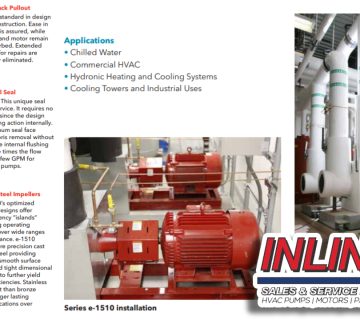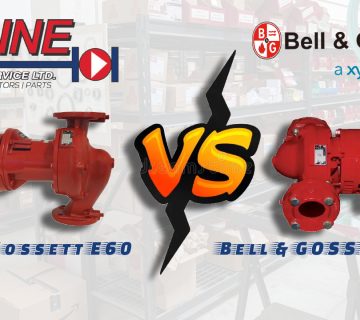Identify a Pressure Gauge & Get the Proper Replacement
A pressure gauge performs an important role in applications, and if it stops working, then the entire process can come to an abrupt halt. If it is replaced with the wrong gauge, it can cost time, money and the safety of personnel.
Replacing a pressure gauge with the most suitable match will ensure processes can keep operating safely and efficiently. But how does a user identify their existing gauge and the replacement they should buy?
Not All Pressure Gauges Are the Same
Unlike a vehicle’s vendor identification number (VIN), which provides complete product detail, a pressure gauge frequently offers no more than the manufacturer name, brand or family model. These pressure gauges also consist of numerous elements, though some are hidden inside the instrument. A user may be able to offer a photo or limited description to
a manufacturer, but they will usually need to ask more questions to properly source a replacement.
7 Steps for Identifying a Pressure Gauge
Let us discuss what questions to ask and the information needed for identifying a gauge. These are not all the factors to consider, but it is a useful guide for getting started.
1. Case (Enclosure/Housing)
What material is it? Gauge cases are typically available in black-painted aluminum, stainless steel, phenolic, plastic, brass or another material for meeting an industry specification and/or requirement.
In the past, brass was highly preferred, as it is extremely resilient for marine applications, though rising costs
influenced its replacement by alternative materials. Additionally, 316L stainless steel has become a common requirement for chemical, food and beverage and sanitary installations.
Next is the case’s structural design. Does it have a solid front or open front? This pertains to whether the gauge does (solid) or does not (open) have an integral wall incorporated into the case behind the dial face. Most gauges do not require a solid front, as most are for general pressure measurement, yet they can offer additional operator safety and a more rugged enclosure if there are extreme pressure spikes that can lead to the rupturing of the gauge system.
The overpressure is projected out of the back of the gauge case and directed away from the operator. Solid-front gauges are common within refineries and chemical plants where there is a heightened concern for process media.
2. Vibration & Pulsation Protection
Another feature often overlooked is whether the gauge is liquid-filled and/or has a throttling device. Why are these important? Each protects the measuring instrument.
Liquid fill dampens the effects of vibration, whereas a throttle plug/screw dampens pressure fluctuations. How does a user know if these are present? Liquid fill can be verified if the gauge has a solid fill plug and a discernible level of fill fluid, typically covering more than 90% of the dial. Liquid fill protects the gauge movement from excessive wear that otherwise would lead to inaccurate readings and an increase in repair/replacement costs.
Be sure the selected fill fluid is compatible with the process media. The most common fill fluids are glycerin, silicone or halocarbon. To see if a unit has a throttling plug/screw installed, look into the process port. This feature is used to keep process pulsation from affecting
the gauge.
3. Contamination Control
To replace a gauge, be sure to confirm the wetted material of the pressure system is fully compatible with the process media. Often, the pressure system’s wetted materials are printed on the dial face and/or on the gauge socket.
4. Accuracy
This will help verify gauge accuracy. A greater number of graduations/figure intervals means higher instrument accuracy. Also, units with a mirror band running along the dial’s edge are typical of test gauges, and they will also have a fine knife-edge pointer.
Most gauges meet either the American Society of Mechanical Engineers (ASME) B40.100 or European Standards (EN) 837-01. Both standards guide the number of dial graduations and figure intervals.
5. Connection Size
Pressure gauges offer a wide variety of pressure connections. The most common standard for the United States is National Pipe Thread (NPT). The thread type will need to be known to ensure proper installation and prevent potential damage due to galling or cross-threading.
As a rule, the size of the gauge dial is a guide to understanding the common pressure connection size. Economical gauges with 1 1/2- to 3 1/2-inch dials typically offer 1/8 NPT to 1/4 NPT, while 4 1/2 inch or larger dial sizes offer 1/4 NPT to 1/2 NPT.
Models identified as process gauges have dial sizes of 4 1/2 inches and larger and are commonly supplied with a 1/2 NPT that supports the instrument.
6. Connection Location
Where is the mounting location on the instrument? Is it lower or back/rear connected, or does it have a special orientation such as three, nine or 12 o’clock? Additionally, be aware of space restrictions that will limit installation.
- When replacing a gauge, consider these mounting options:
- Stem mount: offered with a lower-connect gauge
- Wall/surface mount: offered with a lower-connect gauge
- Panel mount: offered with a back-connect gauge
- U-clamp flush mount: offered with a back-connect (panel mount installations) gauge
- Front flange flush mount: offered with a back-connect (for panel installations) gauge
7. Pressure Ranges
Confirm the dial pressure range and units of measure of the gauge. This should also help identify the accuracy. When replacing the gauge, consider that ASME B40.100 recommends normal operating pressure be confined to 25% to 75% of the selected range. However, in the event of pulsation, the maximum recommended operating pressure should not exceed 50% of the full-scale range.
Considerations When Replacing a Gauge
When seeking a gauge replacement, obtaining the same instrument should not be the only consideration. Many users do not know the ins and outs of the product. Their gauge may have been specified incorrectly or they could have received improper guidance when they made the purchase. Not every user knows what gauge was originally ordered, either. They may not have ordered it; a distributor or other third party could have sold it to them.
Questionable instrument reliability/integrity and contaminants can present a serious risk to processes and cost a user money or downtime. No pressure instrument manufacturer can say with 100% certainty that their recommended replacement gauge is a perfect match, but they should be more confident when following a set guideline.

 Armstrong Pumps
Armstrong Pumps Bell & Gossett
Bell & Gossett Taco Pumps
Taco Pumps Goulds Water Technology
Goulds Water Technology Grundfos Pumps
Grundfos Pumps Wilo & Scot Pumps
Wilo & Scot Pumps Boilermag XT magnetic filter
Boilermag XT magnetic filter Hoffman Specialty
Hoffman Specialty John Crane
John Crane McDonnell & Miller
McDonnell & Miller Heat Exchangers
Heat Exchangers B&G Power Packs
B&G Power Packs Weg Motors
Weg Motors TechTop Motors
TechTop Motors US Motors & Nidec
US Motors & Nidec Baldor Motors
Baldor Motors SKF Motor Bearings
SKF Motor Bearings Motor Repairs
Motor Repairs













